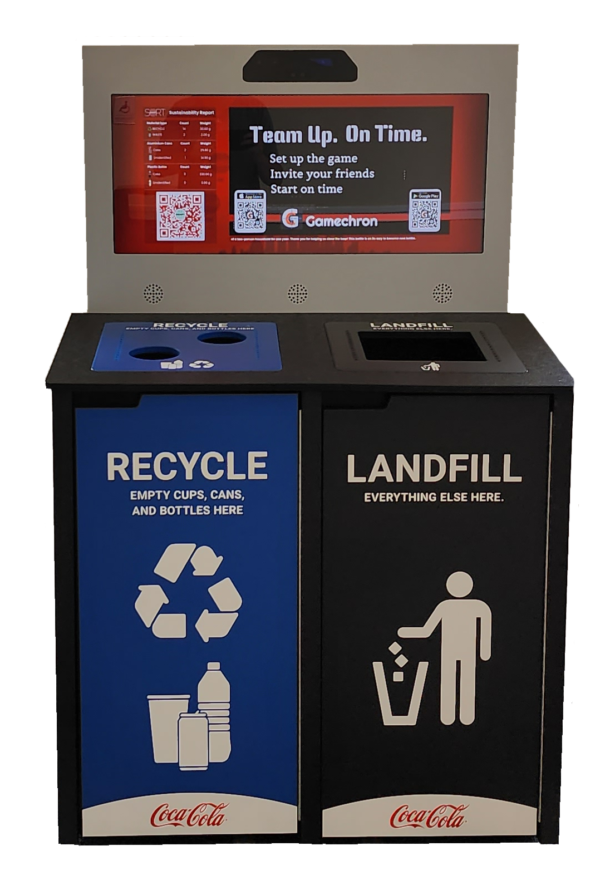Waste is almost as broad a subject as food. Just as there are even hundreds of different kinds of food from the plant kingdom to the animal kingdom, there are close to that many kinds of waste.
Therefore, the subject of waste disposal cannot be properly treated in a short article, but waste disposal can be divided into its major parts with broad overview suggestions for solutions and resources for more information.
How would you divide waste types? I divide them as follows:
1. Garbage that can be burned.
I will grant you that I spent a large portion of my life living in the country, and can you believe it? One of our favorite things to do as kids was burn garbage, usually in 55-gallon barrels, but sometimes this was done in a dirt pit, that was later covered up after everything had burned. Many times, this activity can contribute to the nutrient-richness of the soil. You will always be limited to being outside the city limits for this activity, though. This does mean that if your garbage is not separated, you will have to do so in order to only include that which can be incinerated properly.
2. Garbage that can be recycled.
In waste recycling, you cannot expect to really get rich, but if you were throwing away plastic, metal, paper, biomass, and other recyclable goods anyway, you may as well get paid something for it. Note: Some recyclable materials may not pay anything. But, often they are good for someone, and you do not want it, so why not let them come by and get take it? It is a solution that works out well for everyone.
3. Composting – Application to Dry Organic Waste.
Usually, this is classified as biological waste, but usually, it is comprised of things like hedge trimmings, yard, garden waste, and various other vegetable or fruit, or plant-type waste. It never includes plastics, paper, or animal wastes (such as items left over after dressing a deer or cleaning a fish). When I was a child, we ran greenhouses. We were very successful at it, and we had huge compost piles. After some time, these compost piles, which had a lot of rich loamy dirt in them, were pulverized after sufficient time. This compost was then remixed into fresh soil, like leaf mole, and then cooked in barrels with burning wood under them to remove parasites and other impurities. This soil was then used as potting soil for the various flowering plants we sold, and also was used as a topsoil treatment in the gardens we raised.
4. Landfills – Almost everything else.
Unfortunately, you may need a home-grown dump on your land in which you bury things for decades until they rot into their basic elements. You would only need to do this for garbage that you cannot dispose of in any other way. Be careful to always down-grade your water supply (Lower elevation than your water well) so that you do not contaminate your drinking water!
5. Septic Systems-Recyclable Sprinkler Waste Systems.
I will try to discuss this without grossing anyone out. When you live in the city, you flush your toilet or run your washer, or you put things down the garbage disposal, and off they go into this magical never-never land where you are relieved of ever having to concern yourself with the process. When you live a self-reliant lifestyle in the country, in this too, you must pay close attention. Usually, human waste is handled in four ways.
They are:
5.1) Septic Tanks.
Have I lost you yet? I hope not, because we need to know this. Septic Tanks collect human waste from your toiletry, washing, and sinks. They are stored underground to the tune of hundreds of gallons. From these septic tanks, there are lines dug that go far out under the soil and redistribute the waste as the tank fills. This has been done for hundreds of years and there is not a thing wrong with it. For this type of system, you will first need to run what is called a perk test to see how readily your soil absorbs moisture. This can easily be done by someone else, and usually has to be if you have to have your land certified through a local county for the installation of a waste system. If you elect to do this yourself, be aware that there is a lot of sweat equity involved where you dig the huge hole for the tank to go in, proper fittings that hook up to the house, and then the trenches that go out from the tank. You will have varying amounts of sand, rock, and gravel to deal with, so be prepared to spend some money, although not nearly as much money as you would spend if you hired someone else to do it. As I have said, this article does not come close to telling you what you need to know about septic systems. It is intended as a broad overview, but there are very detailed instructions for doing this available, some of them in book form for sale, and some of them freely available as public domain books online.
5.2) Waste Recycling / Reclamation Systems.
My brother-in-law had one of these and it seemed to work quite well. In the ’80s, Golden Gate Park in San Francisco also used this system to some degree. In this system, there is no septic system, per se, but the waste is processed through a tank chemically and then re-dispersed through a sprinkler system in your large yard. His lawn always looked impeccable. I do not know if this solution is really any cheaper than the septic tank installation, but then, he was in the recycling business, so his passion was in USING everything. When you live in the country, the more you use everything you produce, the more self-reliant you are.
5.3) Outhouses / Porta Potties.
These are typically little houses that are about the size of a small closet. They have a toilet in them. Underneath is a hole that holds chemicals to treat the wastes deposited. At some point, this hole is filled in, and the house is moved to another location for fresh use. It is a good idea to also have this facility located downgrade of your water supply. It is quite primitive, but also quite useful for those who have neither the money nor inclination for a full-blown septic system. There used to be a joke when houses were advertised in the 30s and beyond, something like “House with a bath for sale.” People would jokingly remark, “Well at least it isn’t a house with a PATH for sale!”
5.4) A Shovel.
Ok, I think I may just spare any details here. You get the idea.
I hope this has been an informative treatise about waste disposal. Believe me, I do not know it all by a long shot, and also I have just barely scratched the surface.
This IS one of those things you MUST deal with if you hope to live in the country. Of course, you could find a place where septic, electricity, and water were already in place and more power to you. But even if you purchase a developed place to live with all the amenities, you are still going to have to be conversant enough in the methods of waste disposal to take care of it when something goes wrong. When you are self-reliant, something always invariably goes wrong. That is why you are self-reliant. You FIX it.




